Nest modifications in Temnothorax crassispinus
In the recently published article “Nest modifications by the acorn ant Temnothorax crassispinus (Hymenoptera: Formicidae)” in Myrmecological News, Sławomir Mitrus reveals that acorn ants can modify their nesting sites and the entrance sizes, that is they increase or decrease entrances. He tested both colonies in the field and colonies maintained in the laboratory. Here, he shares some pictures of the study.
A Photoblog contribution compiled by Sławomir Mitrus

All photos are (© Sławomir
Natural nest cavity in acorn used by Temnothorax

Artificial nest sites made of beech woodblocks
used during the field experiment:
nest sites with “wide” and “narrow” entrances – the
beginning of the field experiment.
Entrances to artificial nest sites modified by Temnothorax crassispinus antcolonies, using sand and soil. During the field experiment, nest sites made of beech woodblocks were left in April 2018 and collected about three and a half months later.
Example of Petri dishes from Experiment 2 (a laboratory experiment: Do distance between nest site and source of sand affect nest entrance modification?). During the laboratory experiment, 1.5 ml of dry sand was deposited about 3 cm, or – for the second group – about 10 cm away from the nest entrance.

Part of the Petri dish from Experiment 2 (a laboratory experiment: Do distance between nest site and source of sand affect nest entrance modification?). Colonies reduced entrances using grains of sand. The grains were loosely piled at the entrance. On the photo, a piece of a red translucent filter is moved away.

Experiment 4 (a laboratory experiment: Do larger colonies remove more material filling the nest cavity?) During the laboratory experiment, artificial nest cavities were filled to ca. 80% of their volume either with small pieces of fresh wood or with dry sand; the material removed by ant workers from cavities was collected after four days.

Colonies of the acorn ant Temnothorax crassispinus are able to dig a cavity in the soil. During the laboratory experiment, the ant colonies were transferred to Petri dishes containing a 1:1 mix of dry sand and wet soil, lightly tamped down; the thickness of the layer was about 10 mm. There were no nest cavities in the Petri dishes, but small, flat stones were put on the surface of the layer. A nest cavity under a flat stone (photo 9b – the stone is moved away).

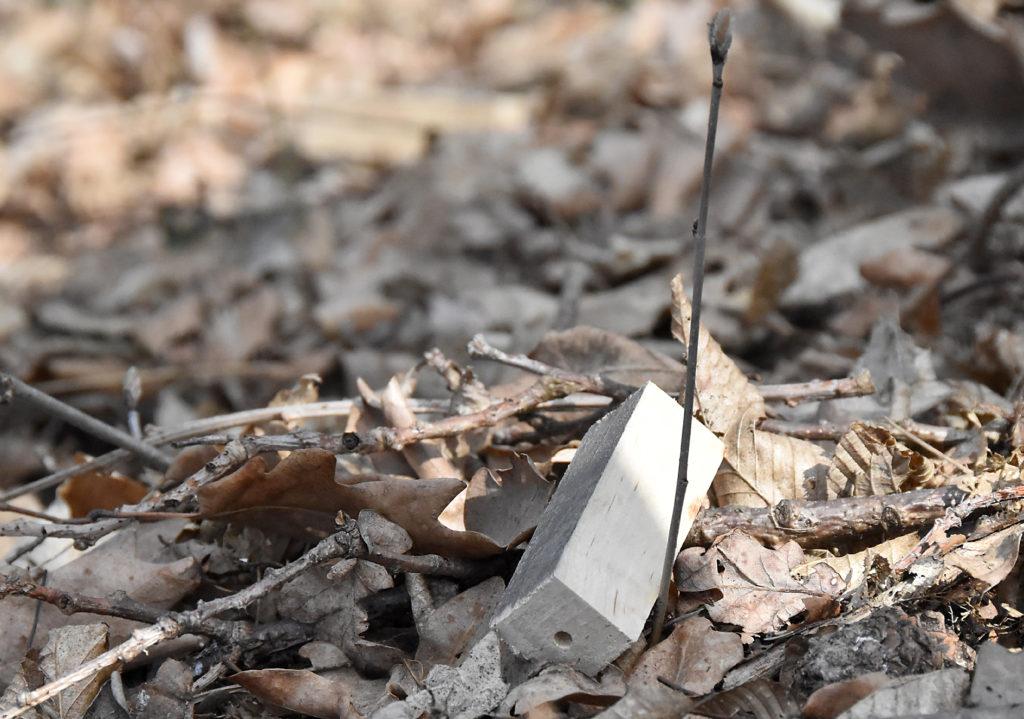
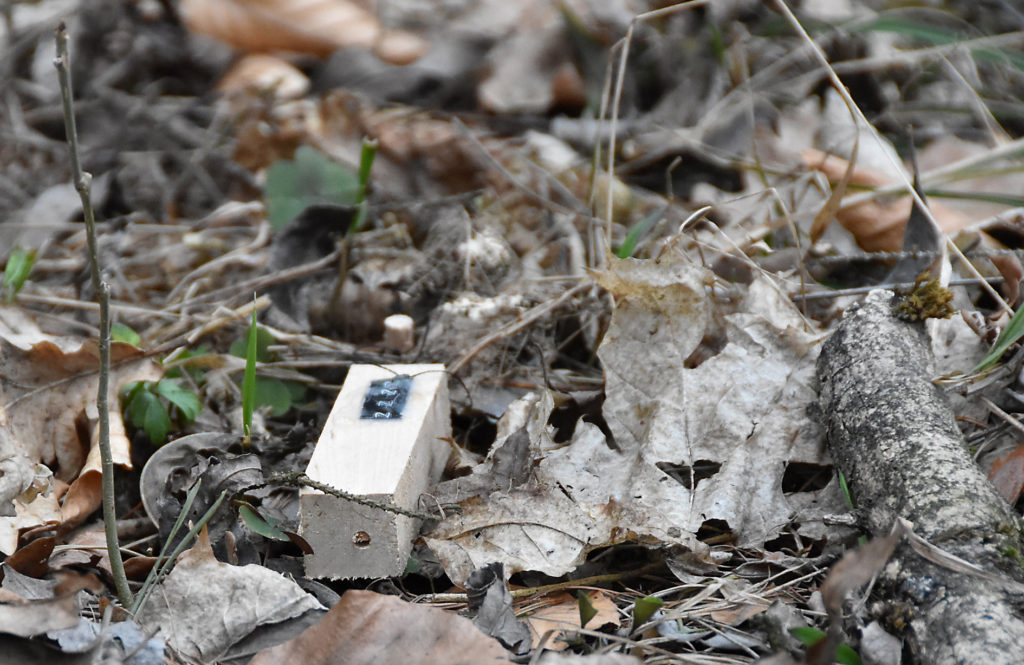



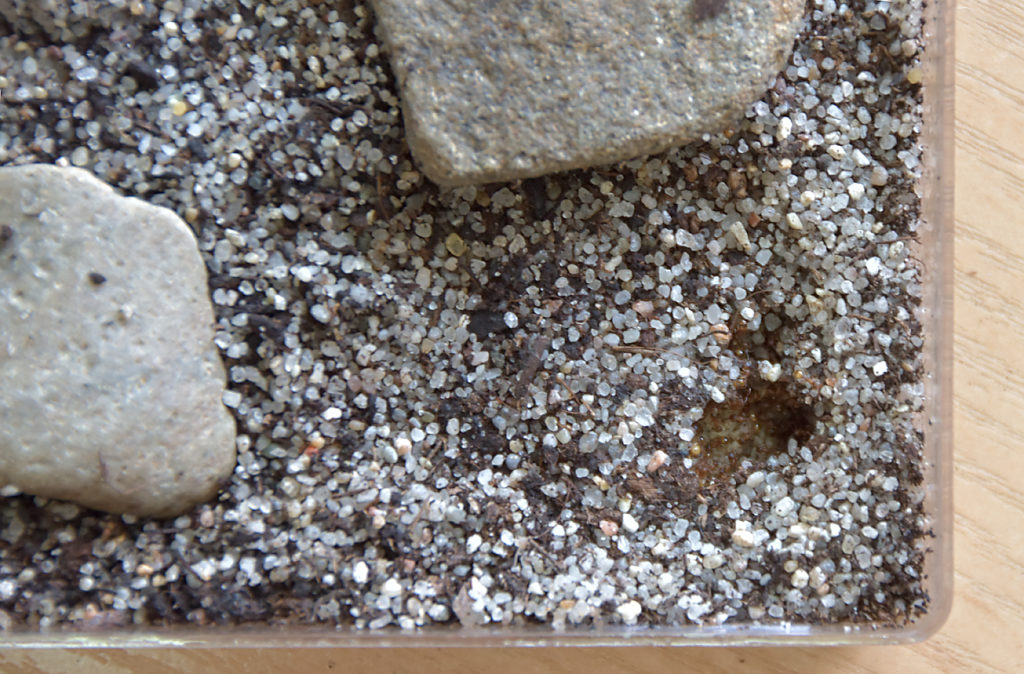

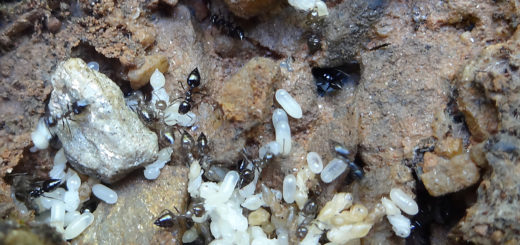
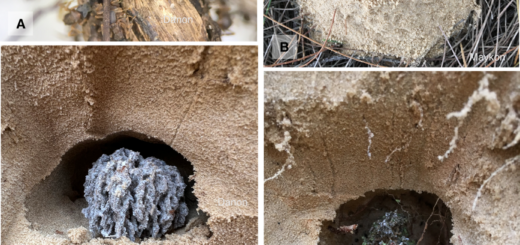

Recent Comments